| Home -> Other California History Books -> Los Angeles Today - 1915 - Los Angeles Chamber of Commerce - Text | |||
 |
|||
|
Buy your railroad tickets to the California Expositions via Los Angeles, The Main Gateway
Los Angeles Today January 1, 1915 Los Angeles Country Unparalleled in growth and energy. Not only a summer and winter resort, but one of the most enterprising business communities of the world. Los Angeles County, in 1910, ranked among the 55 counties of California, as follows: First in value of farm property ---------- $199,995,200 First in value of all crops ---------------- 14,720,504 First in value of fruit and outs ------------ 6,731,532 First in value of hay and forage ------------ 3,430,655 First in value of dairy products ------------ 1,415,144 First in value of bearing lemon trees --------- 219,149 First in value of beet sugar production, tons - 162,059 Second in number of poultry ------------------- 513,965 Second in number of bearing orange trees ---- 1,674,693 Second in rust of irrigation enterprises ---- 7,517,022 Second in number of hearing olive trees -------- 84,934 Second in walnut product, lbs ----------------6,138,033 Its Interurban Electric Railways For comparison, take the leading interurbans of the Central West as shown by the time table of the lines radiating from the largest cities of Ohio, Indiana, Michigan and Illinois. These are the figures of the electric interurban trains departing front these cities 1911 No. Train City Population Routes Departures Indianapolis, Ind. - 250,000 9 201 Ft. Wayne, Ind. ---- 100,000 5 100 Chicago, Ill ----- 2,100,000 4 113 Springfield, Ill. --- 50,000 4 75 Detroit, Mich. ----- 375,000 7 190 Cleveland, Ohio ---- 500,000 9 155 Toledo, Ohio ------- 200,000 0 173 Columbus, Ohio ----- 200,000 0 116 Dayton, Ohio ------- 125,000 9 155 ======================== 3,900,000 62 1,220 But Los Angeles, with a population of 550,000, operates more interurban trains per day than the time cities mentioned above, combined, with a total population of over 4,000,000, the departures from Los Angeles amounting at this time to 6100 over 52 routes. The number of passengers handled yearly on our city and interurban lines amounts to over 160,000,000. Southern California is also the paradise of the owner of the motor car. Figures compiled by the Automobile Club of Southern California show out of 120,000 cars in use in the state that there are 70,000 cars in the 10 Southern Counties of which 50,000 are in Los Angeles County. This wide use of motor cars is due to the fart that we have thousands of miles of splendid roads already built and more projected. Los Angeles County has spent $3,500,000 for a permanent system of good roads. |
|||
|
Los Angeles Today
January 1, 1915 Compliments of the Los Angeles Chamber of Commerce |
|||
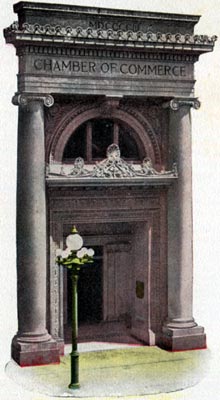  |
|||
|
Los Angeles the Gateway to the Two Expositions
Copyright by The Neuner Company Los Angeles, 1915 |
|||
| Los Angeles the "City of the Angels" - or to give the sonorous Spanish title, "Nuestra Seuora la Reina de Los Angeles" - the Wonder city of the United States, is the most talked of city on the continent. Indeed, its fame has spread all over the world. A city that increases its population within the short period of 30 years from 10,000 to 550,000 is certainly not in the ordinary class. There are three leading features that have contributed to this growth - climate, soil and location. Any one of these advantages would be sufficient to build up a large city, but taken together they insure the future of Los Angeles as the metropolis of the Southwest. Los Angeles was founded on September 4, 1781, by a small band of pobladores, or colonists, who had been recruited in the Mexican States of Sinaloa and Sonora, and brought here under command of a government officer, to found an agricultural colony, for the purpose of raising produce for the soldiers at the presidios. They were a mixed class, composed of one European, seventy-two Spanish-Americans, seven Indians, twenty-two mulattoes and thirty-nine Mestizos. As recently as 1831, fifty years after the founding of the pueblo, the population was only 770. In January, 1847, the population was 1500. Considering that twenty-five years ago it had not a single paved street, Los Angeles has made remarkable progress in street improvements, now having 796 miles of improved streets. Los Angeles has a complete sewer system totaling 701 miles and has an outfall sewer to the ocean. That Los Angeles is, and will always remain, the commercial metropolis of Southern California, admits of no doubt. The City possesses the great natural advantage of being located on the shortest route, by the easiest grades, between the Pacific and the Atlantic oceans. The principal articles of export are fruits, fresh and dried, vegetables of great variety, beans, wine and brandy, wool, honey, canned goods, sugar, olives, wheat, corn, barley, petroleum, cotton and byproducts. The banks of Los Angeles are noted throughout the country for their solid and prosperous condition, with deposits aggregating July 1, 1914, $174,863,637. The clearings of the Los Angeles city banks for the year 1913 amounted to $1,211,168,980. The assessed valuation of property in the city in 1914, including personal property, was $508,247,110. Los Angeles possesses the advantage of having four transcontinental lines. Altogether, there are over a dozen lines of railways centering in Los Angeles. Several steamship companies run vessels regularly from Los Angeles county ports to San Francisco. Portland and Puget Sound on the north, and San Diego on the south. With the Panama canal constructed, the coast of Los Angeles county is now on the direct course of steamships sailing from the Atlantic coast and from European to Asiatic ports. Already arrangements are being made for leading steamship lines of the world to call here. Twenty-three hundred manufacturing establishments in Los Angeles in 1913 turned out products to the value of $157,172,000. The street railway system of Los Angeles is very complete. There is probably no city of the size in the United States that has such a modern and well equipped system, the total mileage of single track being over 365 miles, all electric. The suburban electric railroads radiating from Los Angeles aggregate 1036 miles of single track. They are almost all double track. Some have four tracks. The value of the building permits issued in Los Angeles during the year 1913 amounted to $31,641,921. There are twenty-four public parks within the city limits, aggregating over 4097 acres, of which six are of considerable size. Westlake Park, thirty-two acres in area, at the end of the Seventh street car line, is one of the most popular open-air resorts, Eastlake Park, in the eastern part of the city, covers forty-five acres, and has been made quite attractive. Here also is a lake and the park nurseries and a large alligator farm adjoining. The oldest and best improved of the city parks on Sixth Street, not far from the business center, is known as Central Park. Hollenbeck Park is a tract of about twenty acres on the east side of the river, on Boyle Heights. Echo Park, a beautifully improved tract in the northwestern part of the city, contains the largest body of water in Los Angeles. Elysian Park, 800 acres in area, is a remnant of the thousands of acres of such laud which the city formerly owned. Griffith Park, a tract of 3015 acres, donated to Los Angeles, is located in the north end of the city, and embraces a varied assortment of mountain, foothill and valley scenery and is the second largest municipal park in the country. Exposition Park is undergoing extensive changes and improvements, which will make it the most attractive park in the city, as noted elsewhere herein, The views of mountain, valley, ocean, city and plain, are grand in the extreme. Los Angeles has 7 regular public playgrounds, and 16 vacation or summer centers. The public library maintains a branch at five of the regular playgrounds. During the, winter months a series of free lectures and entertainments are given. After all is said, the chief attraction of Los Angeles to new arrivals lies in its beautiful homes. The rare beauty of the grounds surrounding the attractive homes of Los Angeles is a constant theme of admiration on the part of Eastern visitors. The mildness of the climate permits the most delicate plants and trees to flourish in the open all through the winter. A majority of the residences stand in spacious grounds, a lot of 50 x 150 feet being the smallest occupied by a house of any pretension. The usual material for residences in Southern California is wood - pine and redwood, the latter being used altogether for outside and largely for inside finish. A great variety of architecture is found among the residences of Los Angeles. The Bungalow style is very popular and for more pretentious residences the Mission. One of the most attractive features about a home in this section is the wonderful rapidity with which vegetation of all kinds grow, so that, instead of having to wait years for a new residence to assume a settled and homelike appearance, the owner has to wait only a few months until his house is surrounded with thrifty plants and climbing vines. The population of Los Angeles is cosmopolitan. During the past twenty-five years it has received accessions to its population from every state in the Union, and from almost every country in the world. On a winters day the Los Angeleno may breakfast by the sea shore, after a dip in the ocean, lunch amid the orange groves and dine in the snow fields of the Sierra. There is a climate here to suit everyone. There is no winter and no summer in Los Angeles. They are represented by a wet and dry season. The former is far from a steady downpour, as some suppose. The rainy season is the pleasantest time of the year. The average rainfall is 15.72 inches. This is an "all-the-year-round climate," pleasing in summer as well as in winter. There is no depressing heat, no insect pests. It is not an enervating climate, but bracing and full of electricity; a climate that makes the sick well and the strong more vigorous. The nights are cool, blankets being always needed. The records show that during thirty-four years the thermometer went down to thirty-two degrees, or below, only seventeen times. The lowest temperature observed at the station was twenty-eight degrees above zero, or four degrees below freezing, which happened in January, 1913. During the same period above referred to the records of the United States Weather Bureau in Los Angeles showed that the number of days on which the temperature rose to one hundred degrees or above was twenty-nine, that is to say, less than once a year on an average. Cyclones and tornadoes are unknown in Los Angeles. Thunder storms are occasionally seen in the mountains, at a distance of from fifteen to fifty miles, but very rarely visit the plains. The Los Angeles Harbor is absolutely safe for the largest seagoing vessels and can be entered safely in any kind of weather, and is the logical harbor for the trade of the Orient. The City of Los Angeles has promised to spend $10,000,000 in the next ten years on the further improvement of this great harbor and to date has voted $5,500,000. The expenditure of $3,100,000 by the Federal government on the breakwater, and the dredging of the inner channels still under way, gives this city one of the finest harbors in the world. Ocean going vessels of the deepest draft are now able to come to the wharves, enabling Los Angeles to compete for its share of the growing trans-Pacific trade. The possible water frontage at the harbor is about 21 miles, causing it to rank well among the great harbors of the world. Already steamship lines are in operation from Los Angeles to New York, Boston, Charleston, Mobile and New Orleans; and to various European ports through the Panama Canal; to the Orient and San Francisco, Portland, Seattle and British Columbia on the north. Now that the Panama Canal is opened this commerce is growing with great rapidity. Land has been purchased by the United States government for an extensive system of fortifications on the bluff above San Pedro. On the inner harbor at Wilmington are several immense lumber yards, where vessels discharge their cargoes direct. Los Angeles imports more lumber than any other port in the world. Within a few years the inner harbor around San Pedro and Wilmington will be lined with mammoth warehouses and factories. By annexation San Pedro and Wilmington are within the city limits. Strangers are agreeably surprised, on arrival here, to find that from a social standpoint, Los Angeles compares most favorably with cities of a similar population in the East. This is not at all surprising when we consider that this city has been chiefly settled by people of culture from the country east of the mountains. Most of the leading religious denominations are represented. Lectures and other entertainments, by home and foreign talent, are of almost daily occurrence. The educational and social facilities afforded by Los Angeles, are, in the widest sense of the word, unsurpassed. The Los Angeles Public Library ranks in the forefront of the libraries in the United States in number of volumes, circulation and other standards, in proportion to population. There is not a fraternal organization of any importance that is not represented. There are now 177 school buildings, and new ones are continually being built, to accommodate the ever-increasing throng of children. No state provides more liberally or completely for their training and education. The state ranks third in the number of pupils in high school. In the Polytechnic High School, Los Angeles has an institution second to none of its kind, housed in magnificent white granite and marble buildings that occupy a block at the head of Hope Street on Washington. The private schools of Los Angeles are many and varied. There are several large business colleges and many schools that teach singing, music, drawing, elocution, etc., exclusively; also military academies for boys and collegiate schools for girls. Los Angeles leads the cities of the Coast in educational facilities. The Los Angeles County coast line contains a varied succession of scenery. In addition it has this great advantage, that the beauties of the beach and ocean may be enjoyed to perfection every month in the year. Even at midwinter, when the beaches on the Atlantic Coast are deserted, numerous visitors may be seen at the beach resorts on a Sunday or holiday, enjoying a dip in the surf, or gathering ocean treasures. Not only is the winter climate beyond all comparison with that of the eastern coast at the same time of year, but the summer is also far more pleasant. On the coast line there is never an oppressively warm day. The leading seaside resorts of Los Angeles are Santa Monica, Ocean Park, Venice, Redondo Beach, Long Beach and Catalina Island. Santa Monica, which is reached in less than an hour by two electric roads, is a well improved, progressive seaside city, with beautiful homes, fine beach and many attractions for summer visitors. Ocean Park, adjoining Santa Monica on the south, is built up with neat cottages for a couple of miles along the beach, with a cement walk four miles long and thirty feet wide. Still farther south, Venice, reached in about thirty minutes from Los Angeles, is a most unique and attractive resort. Redondo has a large hotel, a wharf from which fishing may be had, the largest salt water plunge in the world and a pebble beach. North of Redondo are the new resorts of Hermosa and Manhattan, with fine beaches. San Pedro now a part of the city of Los Angeles, is more of a shipping port than a seaside resort. The view from the high bluffs is very fine. Point Fermin is about two miles from San Pedro. Long Beach, a few miles east of San Pedro, reached by steam and electric railroad, is a thriving city of 40,000 people, with one of the finest stretches of hard, level beach on the coast, and a pleasure wharf 1800 feet in length, with a large sun parlor at the outer end. During the past few years the growth has been very rapid, and a protected harbor has been dredged within the city limits. Alamitos Bay, adjoining Long Beach, has a high breezy location on a bluff. Santa Catalina is a picturesque, mountainous island about thirty miles in length and twenty-five miles from the mainland. The water here is remarkably calm and clear, so that marine growths may be seen at a depth of 50 feet or more. There is blue stillwater bathing, big fish in great quantity, which attract amateur fishermen from all over the world, stage riding, goat hunting and other attractions. Hotels and cottages, together with a "tent city," furnish accommodations to visitors, and a fine band plays during the summer season. The island is conducted as an "up-to-date" winter as well as summer resort, steamships making daily trips from Los Angeles harbor. Thousands of people from Southern California, Arizona and more distant points visit Catalina each year, many of them "camping out" for several months in the "Canvas City." The Sierra Madre, or Mother Range, the foothills of which are about ten miles from Los Angeles city, is a most picturesque and interesting range of mountains, which no tourist should fail to visit. Along this range are a number of interesting canyons. The two most popular peaks in the Sierra Madre are Mount Wilson and Mount Lowe. The former is reached by a comfortable trail, either on foot or on horseback. Near the summit is a picturesque camp, where good accommodations are furnished to visitors. The crest of the mountain is a park-like tract, shaded by giant pines, from which the visitor looks across a tremendous gorge into the heart of the range. Here is a world-renowned astronomical observatory with a large telescope. Mount Lowe is reached by electric cars and cable, the whole forming an interesting and ingenious system of mountain railway, which extends to Alpine Tavern, at a height of about 5,000 feet. Half way up is Echo Mountain, where there is a small observatory. In the line of amusements, Los Angeles is well favored. There are many handsome and capacious theaters open the year round. The Temple Auditorium Building is one of the largest reinforced concrete structures of its kind in the world, and is absolutely fire-proof. It contains three separate auditoriums, the largest of which has a seating capacity of 3,500, and contains one of the largest and finest modern pipe-organs in the world. The acoustic properties are almost perfect. Los Angeles attracts the best dramatic and musical talent that visits the West. There are frequent concerts, lectures, fairs, fruit and flower shows. All outdoor recreations can be enjoyed at any season of the year. A fiesta and flower carnival - "La Fiesta de Los Angeles" lasting several days, has been periodically held for ten years in the spring. Pasadena has an annual carnival on New Year's Day, known as the "Tournament of Roses," when may be seen a floral parade and battle of flowers, participated in by citizens in modern and ancient vehicles of every description and in beautiful floats, all smothered in fragrant blossoms. Another attraction is the Mission Play, which to California is the same as the Passion Play to Oberammergau. The play is a pageant drama in three acts depicting the fascinating story of the early Mission days; the building of the Missions; the Christianization of the Indians; the Missions in their zenith; the Missions in ruins; Indian and Spanish songs and dances, showing more early history of California than you could see in a year of travel. This play will run every afternoon during the entire Exposition year, in its own play-house at San Gabriel, 11 miles from Los Angeles, reached by Pacific Electric Railroad. The openings for manufacturing enterprises in Los Angeles are many and varied. Not only do local manufacturers enjoy the advantage of cheap fuel, but they are also protected by the high rates of transportation on manufactured goods from the East. Then, again, the mild climate of this section facilitates manufacturing enterprises, rendering solid and expensive buildings unnecessary. Also, labor troubles are here comparatively unknown. The market for the Los Angeles manufacturers is a large one and is constantly being extended. Our merchants ship their manufactured products as far as Fresno Cal., on the north, and eastward as far as New Mexico, also to the west coast of Mexico, and to southern Nevada. Of late our manufacturers have been extending their field of operations and are now spreading out over the whole Pacific Coast. By way of the Salt Lake Railroad, a large and important new field is opened up in Southern Utah and Nevada. The Industrial Bureau of the Chamber of Commerce is bringing capital and opportunities together. Inquiries addressed to the Bureau will receive prompt attention. Los Angeles is the center of a number of rich mineral fields in Southern California. The chief products, exclusive of petroleum and asphaltum, are gold and borax. There are also produced silver, clay, gypsum, granite, cement, lime and other mineral substances. This city is the natural headquarters not only for the mining fields of Southern California, but also for the vast mining sections of Lower California, Sonora and Arizona, also of the immensely rich territory in Southern Utah and Nevada, which has been opened up to the world by the construction of the San Pedro, Los Angeles and Salt Lake Railroad. The manufacturing of mining machinery and supplies gives employment to a large number of people. One of the most remarkable features of development in Los Angeles County and Southern California during the past few years has been the greatly increased production For more than thirty years petroleum has been produced on a limited scale in Los Angeles and Ventura counties, but it is only within the past few years that the industry has assumed great importance. Today the petroleum industry of Southern California is attracting the attention of capitalists throughout the country. The oil produced in California differs from that of the Eastern states, being a heavier grade, with an asphaltum base, and it is used almost exclusively for fuel. Railroad experience shows that 4 bbls, of fuel oil, at 75 cents per bbl., is equivalent to 1 ton of coal costing $8. The Standard Oil Company has erected one of the largest refineries in the world at El Segundo near Los Angeles. Southern California, of which Los Angeles is the metropolis, has justly been termed the "Artist's Paradise." This applies to artists of every kind. The architect finds here conditions such as his fancy might have pictured as necessary to the full expansion of his talent, but hardly hoped to see. Owing to favorable climatic conditions, embellishments of great delicacy and color schemes and forms of structure impossible in more rigorous climates are here altogether practicable. Marine painters find here within easy reach a dozen beaches, with all the life and action of the seaside resort. In the winter and early spring from the whole coast of Southern California may be seen the extraordinary combination of green wooded foothills, surmounted by snowy peaks. Great interest in music prevails in Los Angeles. There are several phases of musical culture in the Los Angeles schools. One of them is the establishment of school orchestras, of which there are now thirty. They play marches for the lines of children passing in and out of the buildings and they venture into other realms of music for school entertainments and their own pleasure. A leading factor in the musical education of Los Angeles is the Music Teachers' Association Sunday Concerts. There are a number of other fluorishing musical organizations and over 600 music teachers in Los Angeles. As might be expected in this section, where the sun shines over three hundred days in the year, the country club idea is exceedingly popular. There are a number of these clubs scattered through Southern California. The buildings are not so pretentious as many of those found in the east, but they are comfortable and home-like, and the golf-links and tennis courts are in almost daily use, summer and winter. There are half a dozen or more of these country club houses within easy reach of Los Angeles. The largest of these is the Los Angeles Country Club with a membership of 750. It is located a few miles west of town, where it has capacious grounds. The Pasadena Country Club, the San Gabriel Valley Country Club and the Annandale Country Club are all within a few miles of the business center of Los Angeles on the suburban electric lines. One of the most stupendous enterprises ever undertaken by an American municipality has been in progress for six years near Los Angeles and is now completed. It is the bringing of an abundant fresh water supply to the city a distance of over 250 miles from the snowy clad slopes of Mt. Whitney, the highest mountain in the United States. This aqueduct is the longest in the world. From reservoirs in the San Fernando valley the water is delivered into the present distribution system by pipe lines. The aqueduct has a capacity of 258,000,000 gallons delivered at the outlet. The water flows through 52 miles of tunnel, 12 miles of siphon, 100 miles of lined and covered conduit, 40 miles of open lined canal, and 21 miles of open unlined canal, and reservoirs 8 1/2 miles. The total cost of the work was about $25,000,000. Much preparatory work had to be done, including the construction of 225 miles of mountain roads and trails, many cut in solid rock, the building of three water works, systems, a telephone system 350 miles long, and many structures. In addition, the city caused to be built the Nevada and California Railroad, a broad gauge system from Mojave to Owenyo, a distance of 142 miles, across the Mojave Desert. The city also built three hydroelectric power plants to generate power, and for the lighting of camps and tunnels. A cement mill was built at a cost of over $750,000. The mill has an output of 1250 barrels of cement daily. It is estimated that the surplus waters of the aqueduct will be sufficient for the irrigation of 135,000 acres of dry land contiguous to the city. The generation of power from a fall of 1500 feet in the aqueduct has been provided for by a bond issues of $10,000,000. The total power possibilities approximate 120,000 horse power, the major portion of which can be developed within 47 miles of the city. Los Angeles, ever in the van in the procession of progress, boasts a new park of 120 acres, 25 minutes' ride from the heart of the city, reached by ten car lines and surrounded by paved boulevards which, in its make-up, excels anything of its kind in this country. The chief features of this institution, known as Exposition Park, consists of three buildings, costing each a quarter million dollars. A permanent exhibit of the State's resources and industries in the State Exposition building, a Museum of History, Science and Art, and the Seventh Regiment Armory. An Athletic Field graces this park, comprising 40 acres, equipped for base ball, tennis, roque, polo, foot ball, hockey, la crosse, bowling, and is large enough for open air pageants and exercises of all sorts. The present value of this Park, including improvements, is in excess of $3,000,000, and the County and City authorities have selected it as the function center for the 1915 Exposition hosts who will visit this city en route to the great Expositions. There is probably no important city in the United States where most of the necessaries of life are more reasonable than in Los Angeles. Following are normal retail prices: Pears, 2 1/2 to 7 1/2 cents; peaches, 4 to 6 cents; apples, 4 to 6 cents; fresh figs, 4 to 10 cents per pound; watermelons, 5 to 30 cents each; lemons, 5 to 15 cents; oranges, 10 to 40 cents per dozen; strawberries, 5 to 10 cents. Potatoes, $1.50 to $2.00 per hundred pounds; string beans, 2 to 5 cents; peas, 3 to 6 cents; tomatoes, 2 to 5 cents; carrots and turnips, 1 to 2 cents per pound; celery, 5 to 10 cents per bunch; cucumbers, 10 cents per dozen; egg plant, 3 to 7 cents each. Flour $1.75 to $2.10 per 50 lb. sack. Meat: Round steak, 15 to 20 cents; sirloin 18 to 25 cents; leg of mutton, 15 to 20 cents; chops, 18 to 20 cents; lamb, 15 to 25 cents; veal, 20 to 22 cents; roast pork, 20 cents per pound; fish, 10 cents per pound. Butter, 30 to 50 cents per pound; eggs, 25 to 70 cents per dozen; milk, 8 to 10 cents per quart, turkeys, 30 cents per pound; rabbits, 25 cents apiece; California hens, 22 to 30 cents per pound. Fuel: Eucalyptus, oak or mesquite are worth in ordinary seasons from $10 to $14 per cord, and coal from $11 to $14 per ton. Gas is largely used for fuel; also kerosene and gasoline, and a distillate made from Los Angeles crude petroleum. Owing to the mildness of the climate, fuel bills are light here. Coal oil sells from 75c to $1.50 per five gallon can. Lumber averages from $15 to $25 per thousand for rough pine; $20 to $40 for rough redwood; ; $40 to $60 for finished pine and redwood. Three to five-room cottages in the industrial district, with bath, can be obtained at from $12 to $20 per month. Five and six-room comfortable cottages, with bath and electric lights, in good location, within thirty minutes of the business center, from $18 to $22 per month. Five and six-room cottages and bungalows, in good neighborhood, handy to schools, car lines, etc., with modern conveniences, from $25 to $35 per month. Seven or eight-room houses, with bath and electric lights, $25 to $35 per month. Five and six-room flats, usually four or more flats to the building, accessible to car line and within twenty minutes of the business center, from $18 to $25 per month. Flats and apartments, with all modern conveniences, from five to seven rooms, well located, $30 to $45 per month. The overland roads that reach Los Angeles using their own equipment are the Southern Pacific; Santa Fe; San Pedro, Los Angeles and Salt Lake, and the Rock Island Lines. Applications at any of these offices for rates and transportation facilities to California will be given courteous and prompt attention. Situated as it is, Los Angeles is really the "GATEWAY" to the two expositions to be held in California during 1915, the Panama-Pacific International Exposition at an Francisco, opening February 20th and closing December 4th; the Panama-California Exposition at San Diego, opening January 1st and closing December 31st, and by having your tickets routed via Los Angeles you will have the opportunity of spending a few days in the metropolis of the Southwest. For other information address the Chamber of Commerce. Buy your railroad tickets to the California Expositions via Los Angeles - The Main Gateway. The Progress of Los Angeles Shown By Figures Compiled by the Los Angeles Chamber of Commerce Post Office Business Bank Clearings Building Permits Population No. Valuation Year L. A. City County --------------------------------------------------------------------------------------- 1885 $ 46,606.42 1890 97,754.27 $ 36,019,721 737 $ 1,194,939 1860 3,700 4,000 1892 129,065.93 39,529,902 878 1,890,005 1870 5,728 6,200 1893 144,831.44 45,240,725 1,312 1,666,080 1880 11,093 20,000 1894 157,023.96 44,669,100 1,785 2,324,035 1890 50,395 101,454 1895 177,911.04 57,046,832 2,462 4,930,473 1897 93,786 150,000 1896 186,103.80 61,356,141 2,304 2,742,632 1898 95,000 160,000 1897 200,941.03 59,323,916 2,004 2,479,515 1899 100,000 165,000 1898 216,604.37 72,229,036 1,623 2,283,005 1900 102,479 170,298 1899 226,803.37 86,341,616 1,710 2,245,789 1901 117,000 195,000 1900 258,047.28 122,692,555 1,922 2,517,966 1902 125,000 210,000 1901 312,524.00 161,466,671 2,730 4,381,855 1903 136,000 230,000 1902 399,617.56 245,516,094 4,863 9,612,331 1904 175,000 275,000 1903 497,531.06 307,316,530 6,395 13,046,338 1905 201,000 305,000 1904 600,444.81 345,343,956 7,064 13,409,062 1906 240,000 350,000 1905 719,023.13 478,985,298 9,543 15,482,067 1907 263,782 400,000 1906 850,579.01 578,635,516 9,072 18,158,497 1908 295,687 425,000 1907 1,039,547.51 581,802,982 7,584 13,275,943 1909 307,322 460,000 1908 1,089.493.04 505,588,756 7,373 9,934,298 1910 319,198 504,131 1909 1,276,664.07 673,065,726 8,571 13,260,713 1911 (est.) 359,000 554,000 1910 1,476,941.52 811,377,487 10,738 21,684,100 1912 (est.) 427,000 630,000 1911 1,646,601.84 942,914,424 12,408 23,004,185 1913 (est.) 500,000 725,000 1912 1,906,518.68 1,168,941,700 16,453 31,366,357 1914 (est.) 550,000 780,000 1913 2,152,759.20 1,211,167,980 16,413 31,641,921 1914 2,215,114.71 1,145,167,110 9,979 17,361,925 How we Grow Population, 1890, 50,395; 1900, 102,479; 1910, 319,198; 1914 (est.) 550,000; post-office receipts, Is. 1914. $2,215,114.71 Increase of .029 per cent, over 1913. Don't invest with out investigating. |
|||
|
|
|||
 Portion of Inner Harbor |
|||
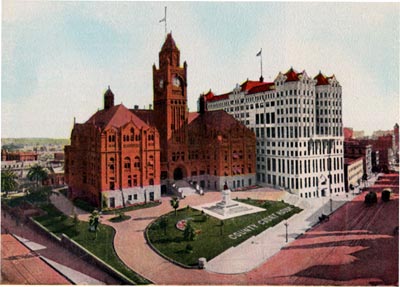 County Court House and Hall of Records |
|||
 Coastwise Steamers - Los Angeles |
|||
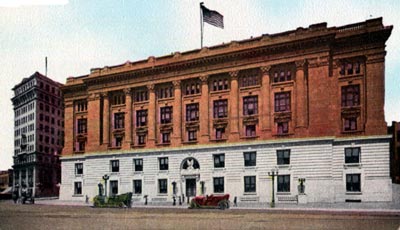 Federal Building - Post Office |
|||
 Los Angeles Public Market |
|||
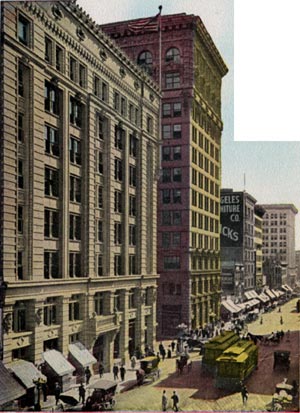 Spring Street - Looking South |
|||
 Westlake Park |
|||
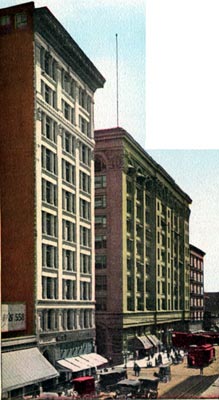 Main Street - Looking South |
|||
 Alfalfa Field |
|||
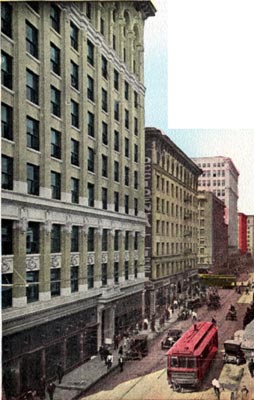 Sixth Street - Looking West |
|||
 Harvesting Scene |
|||
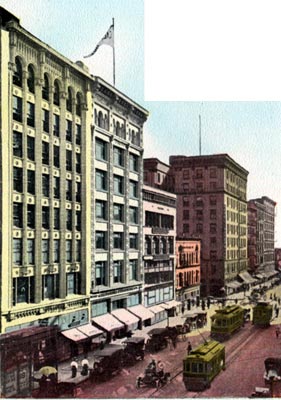 Broadway - Looking South |
|||
 Section of Oil District |
|||
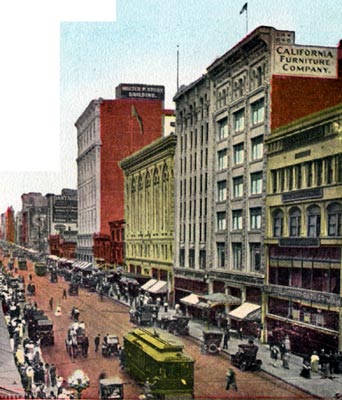 Broadway - Looking North from Seventh |
|||
 East Side of Broadway - North from Sixth |
|||
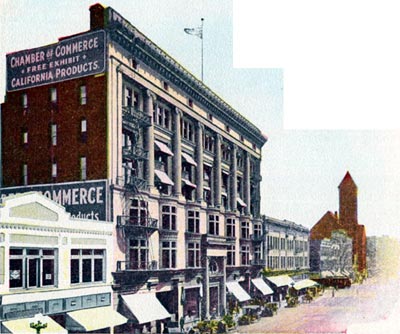 East Side of Broadway - South from First |
|||
 Hollenbeck Park |
|||
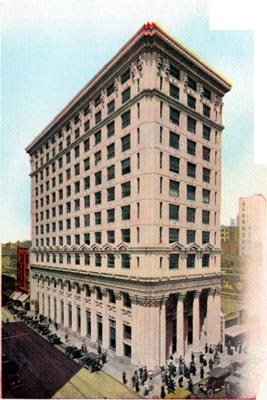 Los Angeles Trust and Savings Bank Building |
|||
 Irrigating Oranges |
|||
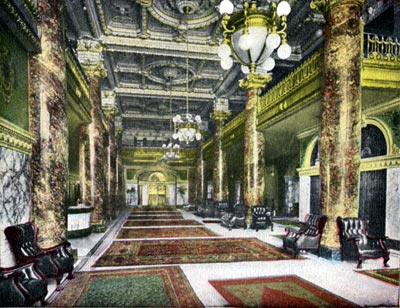 Hotel Alexandria Lobby |
|||
 Los Angeles Residence Street |
|||
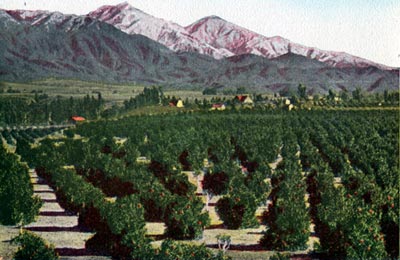 Oranges and Snow |
|||
 California Bungalows |
|||
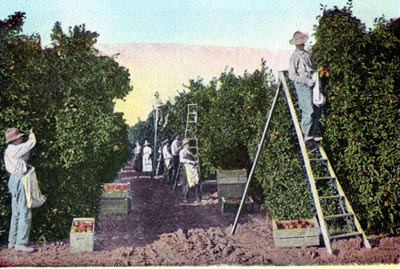 Picking Oranges |
|||
 Southern California Gardens |
|||
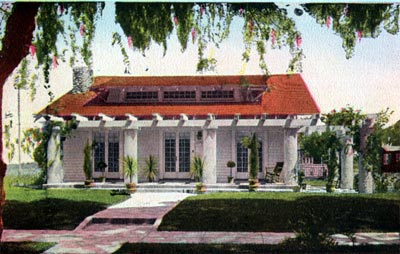 A Modest Home |
|||
 Row of Bungalows |
|||
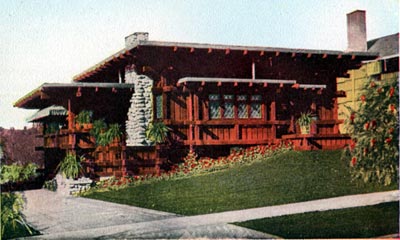 Artistic Bungalows |
|||
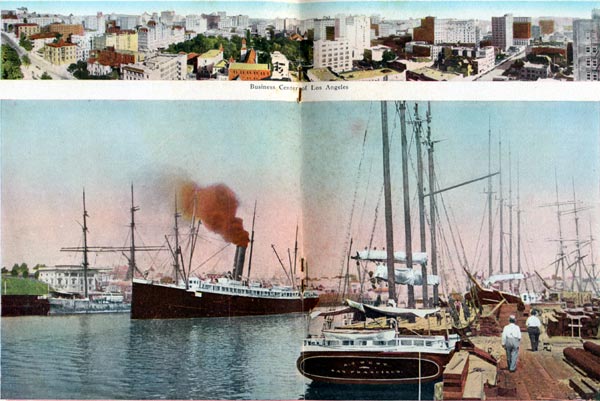 |
|||
 Italians Gardens |
|||
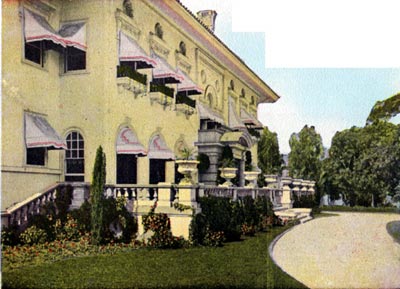 Palatial Mansion |
|||
 Private Residence |
|||
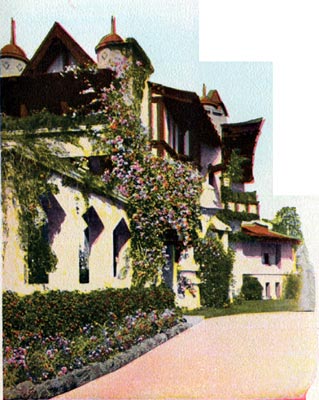 Flower-Bedecked Residence |
|||
 Walnut Grove |
|||
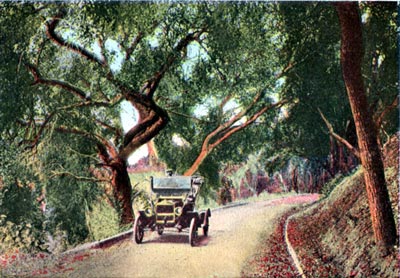 Suburban Road |
|||
 Mt. Lowe Railway |
|||
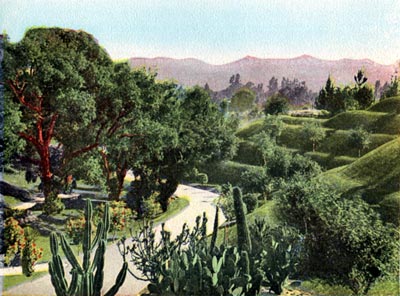 Busch Sunken Gardens, Pasadena |
|||
 Cattle Range, Near City |
|||
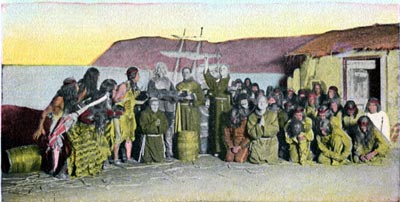 The First Baptism in California, Mission Play, San Gabriel |
|||
 Surf Bathing, Long Beach |
|||
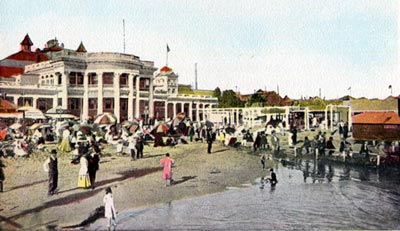 Long Beach, Famous Beach Resort |
|||
 Cawston Ostrich Farm |
|||
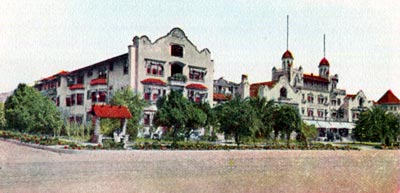 Hollywood Hotel |
|||
 Santa Catalina Island |
|||
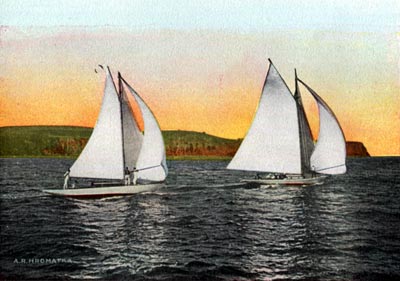 Yachting in Los Angeles County |
|||
 Chysanthemums |
|||
 Fountain, Central Park |
|||
 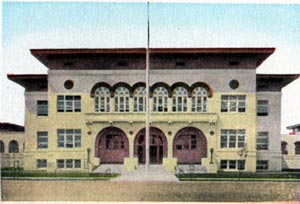 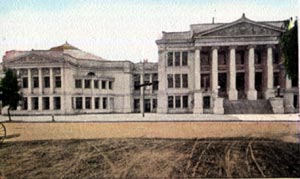 High Schools in the City of Los Angeles |
|||
 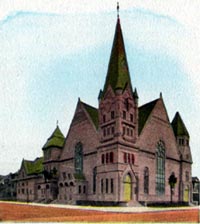 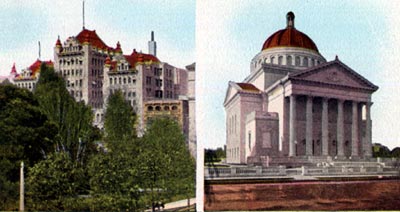 Some of Our Los Angeles City Churches |
|||
 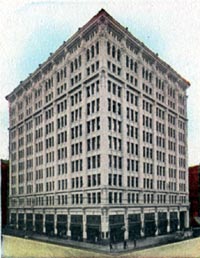 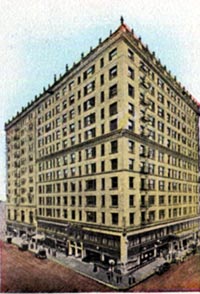 Office Buildings and Hotels |
|||
 Exposition Park |
|||
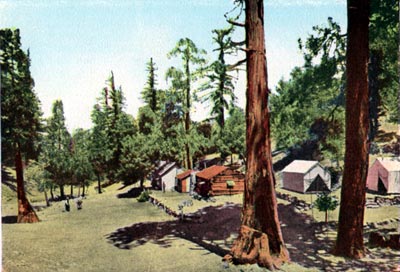 Strain's Camp - Mt. Wilson |
|||
 Open Ditch of the Los Angeles Aqueduct |
|||
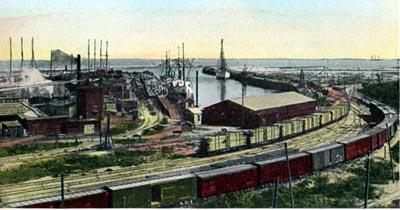 View of Los Angeles Harbor |
|||
 Sierra Nevada Mountains |
|||
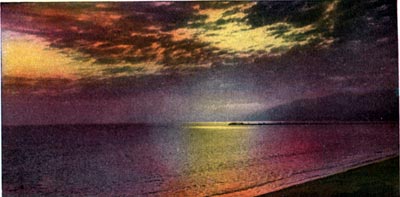 Sunset |
|||
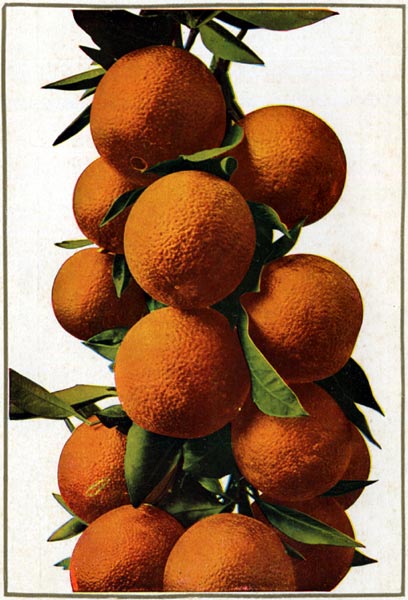 |
|||
|
|
|||